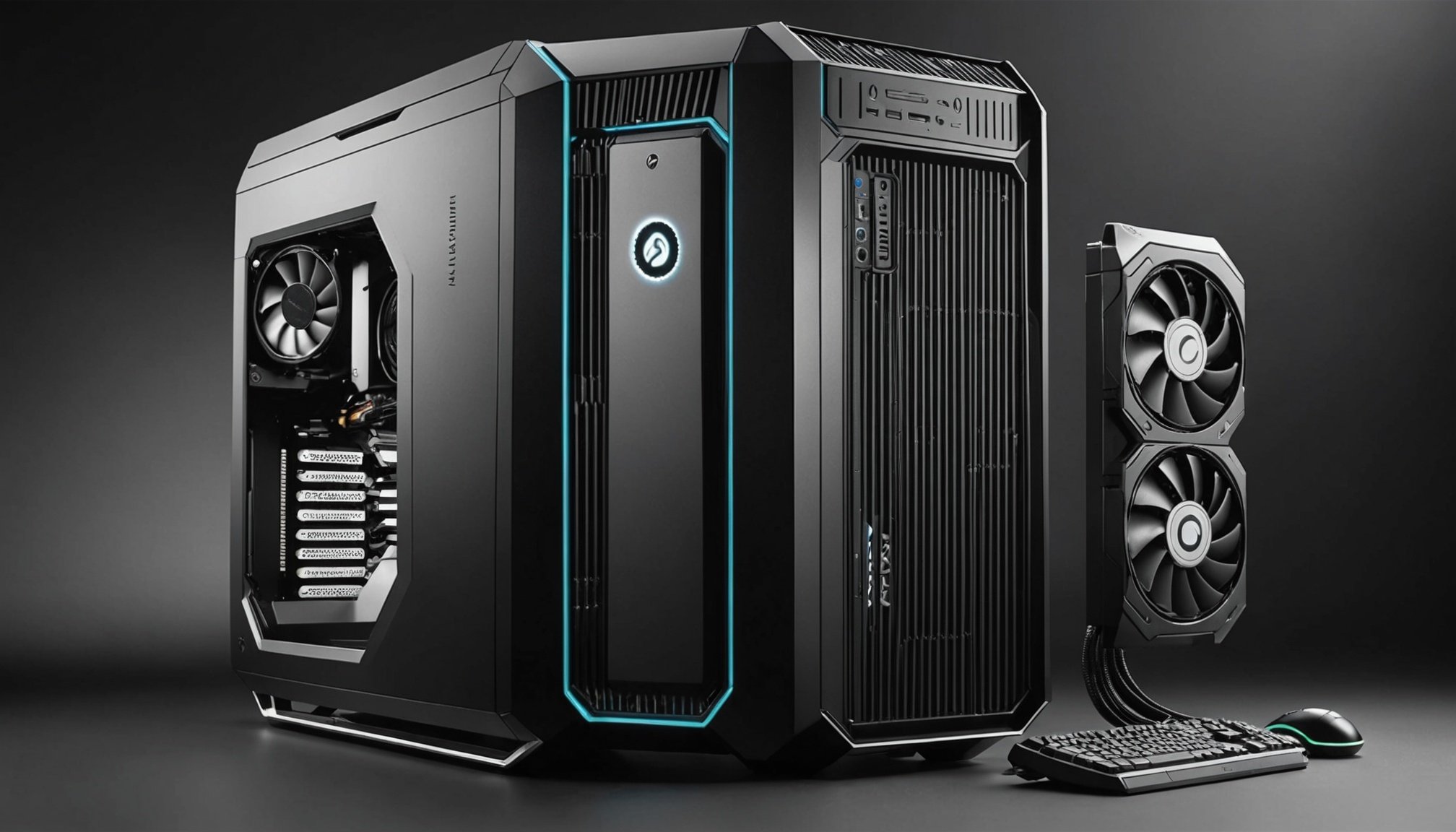Upgrade Your Gaming Experience: A Comprehensive Guide to Boosting Alienware Aurora R11 with a New GPU
Why Upgrade Your GPU?
When it comes to gaming, the graphics processing unit (GPU) is arguably the most critical component of your system. As games continue to push the boundaries of graphics and performance, having a top-notch GPU is essential for a seamless and immersive gaming experience. If you’re still using the Alienware Aurora R11, which is an excellent gaming desktop in its own right, upgrading the GPU can significantly enhance your gaming performance.
Understanding the Alienware Aurora R11
Before diving into the upgrade process, it’s important to understand the specifications and capabilities of the Alienware Aurora R11. Here are some key specs:
Additional reading : Unlocking Home Security Magic: Step-by-Step Guide to Setting Up a Raspberry Pi with MotionEye
- CPU: Intel Core i7-10700KF[5]
- GPU: NVIDIA GeForce RTX 2080 Super (or other variants)
- RAM: 16GB DDR4 RAM at 2933MHz
- Storage: 512GB SSD + 1TB SATA HDD
- Motherboard: Custom Dell motherboard with Intel Z490 chipset[2]
- Cooling: Advanced liquid cooling options
Choosing the Best GPU for Your Upgrade
Selecting the right GPU is crucial for maximizing your gaming performance. Here are some factors to consider and some of the best GPUs available in the market:
Key Considerations
- Compatibility: Ensure the new GPU is compatible with your motherboard and power supply. The Alienware Aurora R11 uses a custom Dell motherboard with PCIe 3.0 slots, so you’ll need a GPU that supports this standard[2].
- Power Supply: The power supply unit (PSU) must be sufficient to handle the new GPU. The Aurora R11 typically comes with a 650W or 850W PSU, which should be adequate for most modern GPUs[4].
- Budget: Determine your budget and balance it with the performance you need. High-end GPUs like the NVIDIA GeForce RTX 4090 offer exceptional performance but come at a higher price.
Recommended GPUs
Here are some of the best GPUs you can consider for your upgrade:
This might interest you : Turbocharge Your Internet: Securely Configure a Blazing-Fast VPN on Your ASUS RT-AX86U Router – Definitive Step-by-Step Guide
- NVIDIA GeForce RTX 4060: A mid-range option that offers significant performance improvements over the RTX 2080 Super and is more affordable than the high-end models[1].
- NVIDIA GeForce RTX 4080: A high-performance option that provides substantial frame rate boosts and supports advanced features like DLSS and ray tracing[1].
- NVIDIA GeForce RTX 4090: The top-of-the-line option that offers the best performance available, ideal for 4K gaming and ultra-high settings[1].
Step-by-Step Guide to Upgrading Your GPU
Upgrading your GPU is a relatively straightforward process, but it requires some care and attention to detail.
Preparation
- Shut Down Your System: Ensure your computer is completely powered off and all peripherals are disconnected.
- Ground Yourself: Static electricity can damage your components. Use an anti-static wrist strap or touch a grounded metal object to discharge static electricity.
- Consult the Manual: Refer to the Alienware Aurora R11 service manual for specific instructions on accessing the interior of your system[3].
Removing the Old GPU
- Remove the Side Panel: Take out the screws that hold the side panel in place and gently pull it off.
- Disconnect Cables: Carefully disconnect the power cables and any other cables connected to the old GPU.
- Remove the GPU: Gently pull the old GPU out of its PCIe slot.
Installing the New GPU
- Align the New GPU: Carefully align the new GPU with the PCIe slot, ensuring the gold contacts are facing the correct direction.
- Secure the GPU: Gently push the GPU into the slot until it clicks into place. Secure it with screws if necessary.
- Reconnect Cables: Connect the power cables and any other necessary cables to the new GPU.
Performance Expectations
Upgrading your GPU can significantly enhance your gaming performance. Here are some performance expectations based on different GPUs:
NVIDIA GeForce RTX 4060
- Frame Rates: Expect frame rates to increase by around 20-30% in games like Cyberpunk 2077 and Baldur’s Gate 3 compared to the RTX 2080 Super[1].
- Resolution: Smooth performance at 1440p and decent performance at 4K with medium to high settings.
NVIDIA GeForce RTX 4080
- Frame Rates: Expect frame rates to increase by around 50-60% in games like Cyberpunk 2077 and Baldur’s Gate 3 compared to the RTX 2080 Super[1].
- Resolution: Smooth performance at 4K with high settings and excellent performance at 1440p.
NVIDIA GeForce RTX 4090
- Frame Rates: Expect frame rates to increase by around 70-80% in games like Cyberpunk 2077 and Baldur’s Gate 3 compared to the RTX 2080 Super[1].
- Resolution: Seamless performance at 4K with ultra-high settings and exceptional performance at 1440p.
Additional Upgrades to Consider
While upgrading the GPU is the most significant performance booster, other components can also be upgraded to enhance your overall gaming experience.
RAM Upgrade
- DDR5 RAM: If your motherboard supports it, upgrading to DDR5 RAM can provide higher speeds and better multitasking performance. The Alienware Aurora R11’s motherboard supports up to 128GB of DDR5 RAM[2].
Storage Upgrade
- M.2 NVMe SSD: Adding or upgrading to a faster M.2 NVMe SSD can significantly reduce load times and improve overall system responsiveness. The Aurora R11 has multiple M.2 NVMe SSD slots available[2].
CPU Upgrade
- Intel Core i9-13600K: If you’re looking to future-proof your system, upgrading to a newer CPU like the Intel Core i9-13600K can provide better performance and more cores/threads. However, this requires a compatible motherboard, which might not be feasible with the current Aurora R11 setup[1].
Practical Tips and Considerations
Here are some practical tips and considerations to keep in mind when upgrading your GPU:
Cooling System
- Ensure your cooling system is adequate for the new GPU. The Alienware Aurora R11 features advanced liquid cooling options, but you may need to adjust or upgrade these depending on the new GPU’s thermal requirements[2].
Power Supply
- Verify that your power supply unit (PSU) can handle the power requirements of the new GPU. A higher wattage PSU may be necessary for more powerful GPUs[4].
Compatibility
- Always check for compatibility between the new GPU and your existing hardware, including the motherboard and power supply.
Upgrading your GPU in the Alienware Aurora R11 can transform your gaming experience, offering higher frame rates, better graphics quality, and support for advanced features like ray tracing and DLSS. By carefully selecting the right GPU and following the step-by-step guide, you can ensure a smooth and successful upgrade.
Table: Comparison of GPUs for Upgrade
| GPU Model | Performance Improvement | Power Consumption | Price Range |
|---|---|---|---|
| NVIDIA GeForce RTX 4060 | 20-30% over RTX 2080 Super | 170W | $500-$700 |
| NVIDIA GeForce RTX 4080 | 50-60% over RTX 2080 Super | 320W | $1,000-$1,500 |
| NVIDIA GeForce RTX 4090 | 70-80% over RTX 2080 Super | 450W | $1,500-$2,000 |
Quotes and Insights
- “When it comes to raw performance and having universal appeal, the new Alien on the ship wins out,” says a review on the Alienware Aurora series, highlighting the importance of choosing the right hardware for optimal performance[1].
- “The choice that will impact price the most is whether or not you get one of the best graphics cards,” emphasizing the significance of the GPU in your gaming setup[1].
By following this guide and considering these factors, you can ensure that your Alienware Aurora R11 remains a top-tier gaming desktop, ready to handle the latest games with ease and provide an unparalleled gaming experience.










